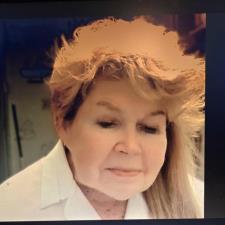
Lucas M. answered • 05/23/19
*REDUCED RATE DUE TO COVID-19* 99th Pct. SAT/ACT Tutor / Homework Help
49.R.9 & 50.R.9 (medium)
Answer Choices B and D are the correct answers because Lines 42-45 describes “scientists who specialized in lignin” detecting lignin in C. cheilosporoides because “they found the same telltale components derived from radical coupling reactions of hydroxycinnamyl alcohols used to describe lignin in terrestrial plants.” These Lines most closely match Answer Choice B which describes the algae as being “found to contain features typically found in plants known to contain lignin.” Answer Choice A is incorrect because although C. cheilosporoides is described as being tough, neither the Passage nor our Text tell us that specialists therefore found it “difficult to analyze without the use of specialized chemistry.” Answer Choice C is incorrect because neither our Texts nor our Passage mention prior research suggesting that seaweed species contain certain molecules which make it particularly durable. Answer Choice D is incorrect because neither our Text nor our Passage mention unexpected measurement results.
How to solve this? Question 49 asks, “Scientists who specialized in lignin were useful to Martone and Estevez because [...]?” Because this is a Paired Question, we should begin by going through the answer choices for Question 50, looking for any text that mentions scientists who specialized in lignin and were useful to Martone and Estevez. [Because of Question Order Rule, we can also expect our Text to come later in Passage, probably after Line 35 or so]. For Question 50, Answer Choice A tells us that, “Martone didn’t set out to locate lignin in algae.” Because this answer choice doesn’t mention scientists who specialized in lignin and because it comes too early in the Passage, we can eliminate this option. Answer Choice B says that, “the calcified, or rigid-bodied, seaweed has multiple noncalcified joints that make it flexible yet strong enough to handle that setting.” This choice doesn’t mention the scientists who specialized in lignin either, so we can eliminate this option. Answer Choice C says that Estevez examined the joints for the seaweed for Martone and found “secondary cell walls, features commonly found in land plants.” This answer choice might at first seem more plausible than the first two, however, we should note that it only concerns Martone and Estevez themselves, and not other scientists who specialized in lignin and were helpful to them. Answer Choice D describes John Ralph and his colleagues detecting lignin in C. cheilosporoides. Just prior to this, in Lines 37-41, we’re told that Martone and Estevez sought out experts in lignin. So, this answer choice does describe scientists who were experts and lignin and who helped Martone and Estevez. All we know then, from this Text, is that these specialists were helpful because they detected lignin in C. cheilosporoides.
For Question 49, Answer Choice says that, “the toughness of C. cheilosporoides made it difficult to analyze without the use of specialized chemistry.” Because this answer choice doesn’t match either our Text or our Passage, we can eliminate it. Answer Choice B says that specialists were helpful because, “C. cheilosporoides was found to contain features typically found in plants known to contain lignin.” This does match our Text, that these specialists found lignin in the seaweed, and, moreover, the sentence just after our Text describes John Ralph and his colleagues finding “‘the same telltale components derived from radical coupling reactions of hydroxycinnamyl alcohols used to describe lignin in terrestrial plants,” which matches the last part of our answer choice, so we should keep this option. Answer Choice C says that specialists were helpful because “prior research suggested that seaweed species contain molecules of a particularly durable chemical compound.” This answer choice doesn’t match either our Text or our Passage, so we can eliminate it as well. Answer Choice D says that “some unexpected measurement results from tests for lignin required specialist interpretation.” In Paragraph 6, we’re told that Estevez discovered secondary cell walls in C. cheilosporoides, which are typically only found in land plants, and that this prompted him and Martone to seek out experts in lignin. This situation might seem to match Answer Choice D, that an unexpected measurements required specialist interpretation. However, we should note that the text in Paragraph 6 is not one of our options, so it can’t be used to support Answer Choice D. For this reason, then, we should eliminate it. This leaves Answer Choices B and D as our correct answers.




